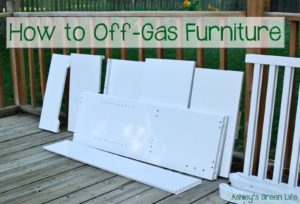
 Your indoor environment maybe making you sick. The US Environmental Protection Agency has found that indoor air pollution exposure can cause eye, nose and throat irritation, fatigue, dizziness, headache, asthma and cancer. It can contain dust, mold, pollen, volatile organic compounds (VOCs) and other air pollutants. VOCs are organic chemicals that evaporate and enter the surrounding air. There are both man-made and naturally occurring VOCs. Some are harmful to human health. One example is formaldehyde.
Your indoor environment maybe making you sick. The US Environmental Protection Agency has found that indoor air pollution exposure can cause eye, nose and throat irritation, fatigue, dizziness, headache, asthma and cancer. It can contain dust, mold, pollen, volatile organic compounds (VOCs) and other air pollutants. VOCs are organic chemicals that evaporate and enter the surrounding air. There are both man-made and naturally occurring VOCs. Some are harmful to human health. One example is formaldehyde.
You may have bought new furniture and household items for the home during the holiday season. There are some facts about these you should be aware of. New furniture might be made using harsh chemicals, flame retardants, pesticides, chemical dyes and binding agents. Wood furniture is coated with chemical lacquers, which add shine and protection but still produce VOCs This furniture should be aired out in a garage or exterior space for at least two weeks to allow it to “off-gas” before putting it inside your home. Consumers should find out which coatings are used on furniture before purchasing.
Solid wood is preferred over engineered wood (aka particle board) because it can emit formaldehyde for the life of the product. Used furniture is a good alternative to new and you can refinish them with low VOC products, organic and other natural materials.
Synthetic mattresses and memory foam are filled with VOC-emitting chemical foams and toxic flame retardants. Mold and dust grow in a warm moist environment. A majority of people spend about ⅓ of their time on their bed. Since the entire body is in contact with the bed and bedding, the exposure to dust mites, mold and chemicals are increased – especially if the bedroom doors are closed. Older mattresses, chairs, sofas and other furniture still harbor these and release them when used.
Mattresses and pillows should be covered with zippered organic allergy covers to create a barrier against VOCs, dust mites and mold. Non-organic products may contain flame retardants and pesticide residue. Certified organic bedding can be purchased at specialized stores (e.g. Bed Bath and Beyond) and large department chain stores (e.g. Target).
New carpeting, along with the pads and adhesives used for installation, contain chemicals and emit harmful VOCs. The American Lung Association suggests selecting carpeting with low VOC emissions and requesting that the carpeting be unrolled and aired out for 3 days prior to installation. Request non-toxic low VOC glues and adhesives. Wall to wall carpeting should be vacuumed at least 3 times per week with a high efficiency particulate air (HEPA) filter.
Allergic Living Magazine has recommendations for creating a healthier indoor environment:
Choose a low VOC finish on furniture
- Avoid upholstered couches and chairs
- Use wood or leather furnishings, since these trap fewer allergens and are easier to clean
- Choose chromium-free leather that is better for the indoor and overall environment
- Select organic wool that is naturally fire retardant, soft and has no chemical coating
- Choose natural latex over harsh chemical fillings for a furniture stuffing
- Wash bedding regularly – optimally in hot water to reduce dust mites.
- Use either area rugs or bare wood floors or tile floors instead of wall to wall carpeting
The goal is to eliminate harmful chemicals so you are not absorbing them through your skin and so you are not breathing in toxic VOCs. Consumers should ask questions of manufacturers and let them know they want healthier options. Consumer demand is ultimately the primary driver behind industry shifts.
Healthy furniture retailers:
El Furniture – www.elfurniture.com
Naturepedic – www.naturepedic.com
Obasan – obasan.ca (Canada, ships to USA)
Furnature – www.furnature.com
Cisco Brothers – www.ciscobrothers.com
EcoBalanza – www.greenerlifestyles.com
Yvette, RN, BSN